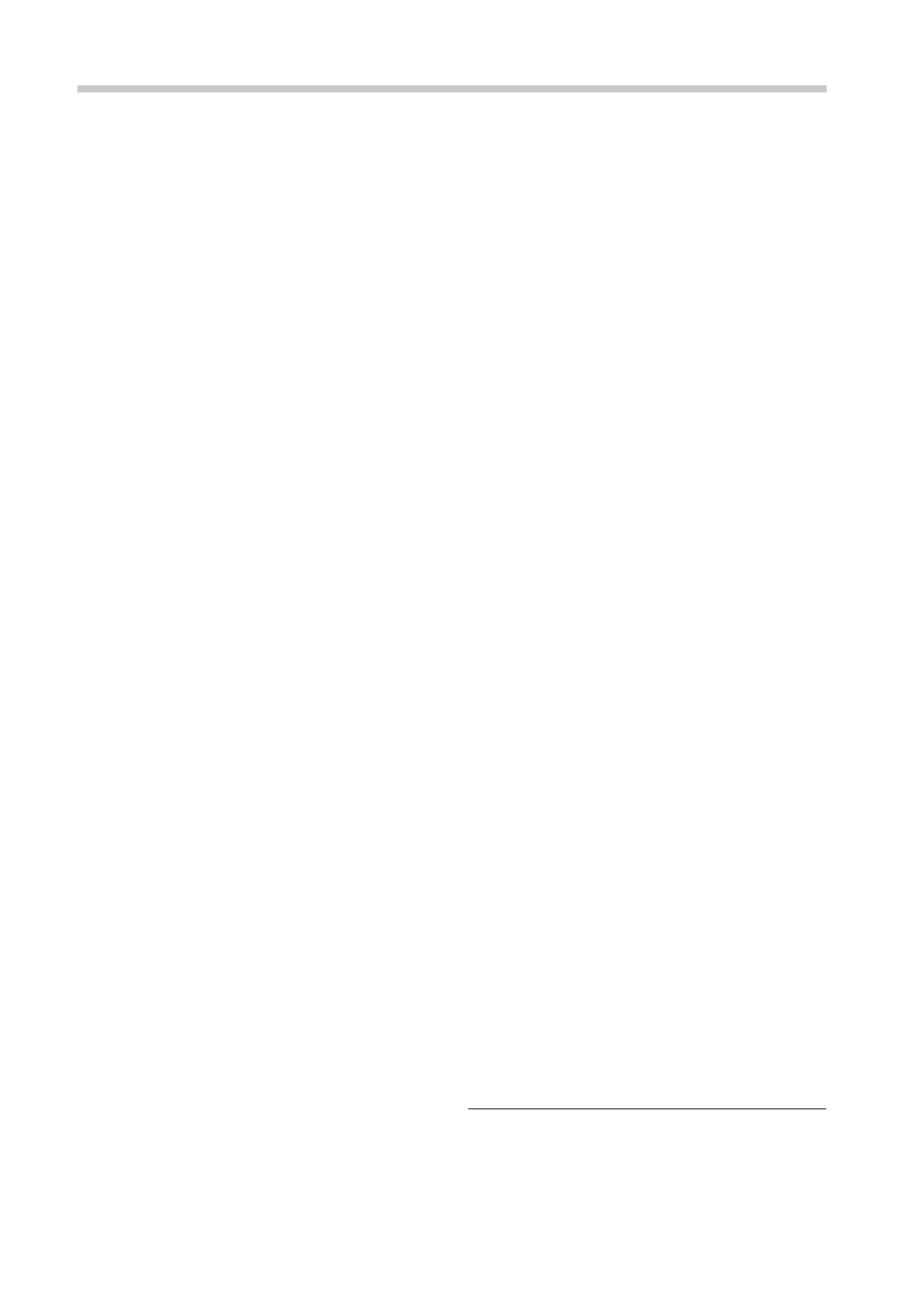

171
testing in stable COPD patients. Eur Respir J 1994; 7:
1871-6.
5.- McParland C, Krishnan B, Wang Y, Ga-
llagher C G. Inspiratory muscle weakness and
dyspnea in chronic heart failure. Am Rev Respir Dis
1992; 146: 467-72.
6.- Coakley J H, Nagendran K, Honavar M,
Hinds C J. Preliminary observations on the neuromus-
cular abnormalities in patients with organ failure and
sepsis. Intensive Care Med 1993; 19: 323-8.
7.- Celli B R. Respiratory management of diaphragm
paralysis. Semin Respir Crit Care Med 2002; 23: 275-
81.
8.- Maish M S. The diaphragm. Surg Clin North Am
2010; 90: 955-68.
9.- Moxham J. Respiratory muscle fatigue: mechanisms,
evaluation and therapy. Br J Anaesth 1990; 65: 43-53.
10.- Mier-Jedrzejowicz A, Brophy C, Moxham
J, Green M. Assessment of diaphragm weakness. Am
Rev Respir Dis 1988; 137: 877-83.
11.- White J E, Drinnan M J, Smithson A J,
Griffiths C J, Gibson G J. Respiratory muscle
activity and oxygenation during sleep in patients with
muscle weakness. Eur Respir J 1995; 8: 807-14.
12.- Alexander C. Diaphragmatic movements and the
diagnosis of diaphragmatic paralysis. Clin Radiol 1966;
17: 79-83.
13.- Houston J G, Angus R M, Cowan M D, McMi-
llan N C, Thomson N C. Ultrasound assessment
of normal hemidiaphragmatic movement: relation to
inspiratory volume. Thorax 1994; 49: 500-3.
14.- Lerolle N, Diehl J L. Ultrasonographic evaluation
of diaphragmatic function. Crit Care Med 2011; 39:
2760-1.
15.- PolkeyM I, Green M, Moxham J. Measurement
of respiratory muscle strength. Thorax 1995; 50: 1131-5.
16.- Laroche C M, Carroll N, Moxham J, Green
M. Clinical significance of severe isolated diaphragm
weakness. Am Rev Respir Dis 1988; 138: 862-6.
17.- Braun N M, AroraN S, Rochester D F. Respi-
ratory muscle and pulmonary function in polymyositis
and other proximal myopathies. Thorax 1983; 38: 616-
23.
18.- Black L F, Hyatt R E. Maximal respiratory pressu-
res: normal values and relationship to age and sex. Am
Rev Respir Dis 1969; 99: 696-702.
19.- Leech J A, Ghezzo H, Stevens D, Becklake
M R. Respiratory pressures and function in young
adults. Am Rev Respir Dis 1983; 128: 17-23.
20.- Bruschi C, Cerveri I, ZoiaM C, Fanfulla F,
Fiorentini M, Casali L, et al. Reference values
of maximal respiratory mouth pressures: a population-
based study. Am Rev Respir Dis 1992; 146: 790-3.
21.- Koulouris N, Mulvey D A, Laroche C M,
Green M, Moxham J. Comparison of two different
mouthpieces for the measurement of PImax and PEmax
in normal and weak subjects. Eur Respir J 1988; 1: 863-
7.
22.- Hamnegard C H, Wragg S, Kyroussis D,
Aquilina R, Moxham J, Green M. Portable
measurement of maximum mouth pressures. Eur Respir
J 1994; 7: 398-401.
23.- Smyth R J, Chapman K R, Rebuck A S. Maxi-
mal inspiratory and expiratory pressures in adolescents.
Normal values. Chest 1984; 86: 568-72.
24.- Heritier F, Rahm F, Pasche P, Fitting J W.
Sniff nasal inspiratory pressure. A noninvasive as-
sessment of inspiratory muscle strength. Am J Respir
Crit Care Med 1994; 150: 1678-83.
25.- Koulouris N, Mulvey D A, Laroche C
M, Sawicka E H, Green M, Moxham J. The
measurement of inspiratory muscle strength by sniff
esophageal, nasopharyngeal, and mouth pressures. Am
Rev Respir Dis 1989; 139: 641-6.
26.- Kyroussis D, Mills G, Hamnegard C H,
Wragg S, Road J, Green M, et al. Inspiratory
muscle relaxation rate assessed from sniff nasal pressu-
re. Thorax 1994; 49: 1127-33.
27.- Uldry C, Fitting J W. Maximal values of sniff nasal
inspiratory pressure in healthy subjects. Thorax 1995;
50: 371-5.
28.- Mulvey D A, Elliott M W, Koulouris N
G, Carroll M P, Moxham J, Green M. Sniff
esophageal and nasopharyngeal pressures and maximal
relaxation rates in patients with respiratory dysfunction.
Am Rev Respir Dis 1991; 143: 950-3.
29.- Mier A, Brophy C, Moxham J, Green M. Phre-
nic nerve stimulation in normal subjects and in patients
with diaphragmatic weakness. Thorax 1987; 42: 885-8.
30.- Mier A, Brophy C, Moxham J, Green M.
Twitch pressures in the assessment of diaphragm weak-
ness. Thorax 1989; 44: 990-6.
31.- Similowski T, Fleury B, Launois S, Catha-
laH P, Bouche P, Derenne J P. Cervical magnetic
stimulation: a new painless method for bilateral phrenic
nerve stimulation in conscious humans. J Appl Physiol
1989; 67: 1311-8.
32.- Wragg S, Aquilina R, Moran J,
Ridding M, Hamnegard C,Fearn T,
et al. Comparison of
cervical magnetic stimulation and bilateral percutaneous
electrical stimulation of the phrenic nerves in normal
subjects. Eur Respir J 1994; 7: 1788-92.
Correspondencia a:
Dr. Fernando Saldías Peñafiel
Departamento de Enfermedades Respiratorias
Pontificia Universidad Católica de Chile.
Marcoleta 350-1er Piso
Santiago, Chile.
Email:
fsaldias@med.puc.clEvaluación de los músculos respiratorios en la parálisis diafragmática bilateral
Rev Chil Enf Respir 2014; 30: 166-171


















